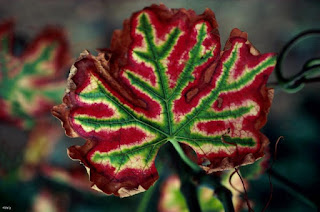This Monday, the first private international call for projects, endowed with 600’000 €, of Maison Hennessy was won by a team bringing together Inra and Bordeaux Sciences Agro.
There are different forms of disease, the main one of which is currently the esca - also called apoplexy of the vine —. This disease suffocates the vines and affects the entire French vineyard and mainly in Charente where Hennessy cognac is produced.
Maison Hennessy wants to fight against apoplexy of the vine
From the start of autumn and summer, the vine contaminated by esca has leaves with yellowish or reddish patches on the interveinal spaces. Then, leaves can gradually dry out and die prematurely, resulting in poor fruit growth, poor ripening and bad growth of the twigs at their ends. Nowadays, no phytosanitary product has been shown to be effective in the fight against Esca and some vines must be pulled up and then burned.
According to the CEO of Hennessy, Bernard peillon, "The House is burning". These are the words used when announcing the company’s collaboration with Prof. Patrice Rey’s team for the next three years.. The professor will lead the joint research unit "Health and Agroecology of the vine" of the National Institute of Agronomic Research (Inra) and Bordeaux Sciences Agro.
The problem is not that French nor European, but international. Wood diseases strike everywhere, also this call for projects received 23 proposals for 13 different countries whose applications have been evaluated by the management of the master assembler of the house, Yann Fillioux. The project led by Patrice Rey, who is interested in the influence of environmental factors and cultural practices, has established collaborations with research units in Austria, from Chile, from Hungary, of Italy, from Israel, from South Africa and California.
A "shortfall" of 2,1 to 3,4 Mhl for French viticulture
The manifestations of the disease are not rapid since the first symptoms are visible at best after 7 years, but very often they are visible after 15 or 20 years. "It is then too late", indicates M. Rey and pulling up is then mandatory. M. Rey will carry out his research to adapt cultural practices - especially the size of the vine - to fight against disease. "We want to start from the plant, study resistance strains, look and understand ”to have a“ systemic and global vision ”and combine solutions to fight effectively against this evil. "We need to see it clearly", insists Patrice Rey.
In 2014, losses related to wood diseases are estimated at a "shortage of production" of 2,1 to 3,4 million hectoliters for French viticulture, that is to say 900 million to one billion euros. Public research has been heavily mobilized since the end of the years 2000 against this threat, which evokes that of phylloxera, an aphid that ravaged vines around the world at the end of the 19th century.
In 2015, Florence Fontaine presented a worrying inventory of the proliferation of wood diseases in France. In Beaujolais near 9 % of the vineyard was affected, 6 % Chardonnay in the Yonne and up to 45 % of the Trousseau and Savagnin grape varieties in the Jura. The diseases of the grapevine wood have made 13 % of unproductive French vineyards.
— You have the full presentation video below —
Jean-Nicolas Mouretin
Read also :
- An effective algae against vine diseases
- China wants to produce the best wine in the universe
- Wine : drones could save viticulture and vines
Do not hesitate to let me know your impressions of your experience in the comments. You can also follow your wine blog with Instagram.



